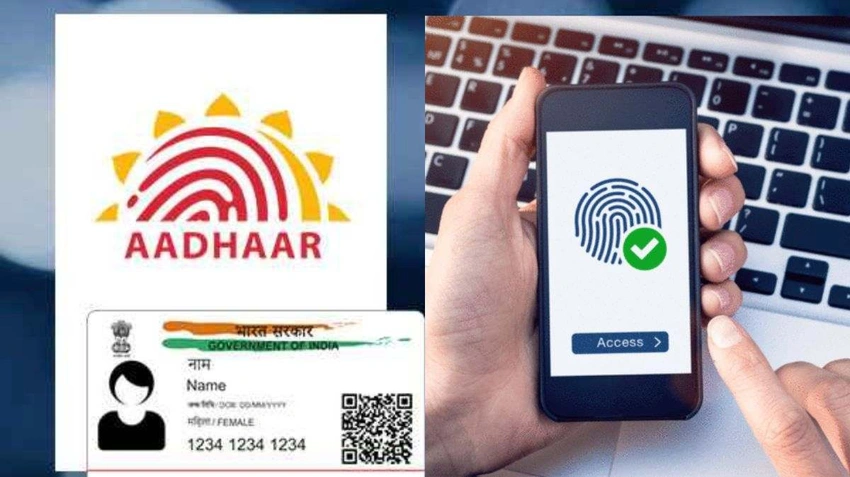We all are aware that AI tools like OpenAI's ChatGPT have revolutionized our way of life, offering unparalleled assistance in activities ranging from quick problem-solving to the creation of any content. However, recent developments have unveiled a troubling side to artificial intelligence: its misuse in creating fake identification documents like Aadhaar and PAN cards in India. This issue raises serious concerns about cybersecurity and the ethical use of AI.

The Emergence of AI-Generated Fake Documents
Social media platforms have recently been abuzz with instances where users have used ChatGPT to produce hyper-realistic fake identification documents. Screenshots circulating online depict users prompting ChatGPT to create replica Aadhaar and PAN cards, complete with artificial personal details and identification numbers.

Potential Risks and Cybercrime Implications
The capacity to create convincing fake IDs using AI tools like ChatGPT poses several risks:
- Identity Theft: Fraudsters can utilize counterfeit documents to impersonate individuals, leading to unauthorized financial transactions or access to sensitive information.
- Financial Fraud: Fake IDs can be employed to establish fraudulent bank accounts, apply for loans, or conduct illicit financial activities, undermining financial institutions' integrity.
- Erosion of Trust: The proliferation of fake documents can diminish public trust in official identification systems, complicating verification processes for businesse and government entities.

Public and Expert Reactions
The revelation of ChatGPT's misuse has elicited varied responses from the public and cybersecurity experts. Many have taken to social media to express their concerns. One user remarked:
Cool and terrifying: ChatGPT can generate fake Aadhaar and PAN cards. Are we prepared for the implications?
Cybersecurity professionals emphasize the urgency of addressing these vulnerabilities. Experts from the Financial Express note that AI tools are being exploited to create deep fakes, including fake profiles that can deceive individuals into divulging personal information or transferring funds.
One user, Yaswanth Sai Palaghat, wrote that:
ChatGPT is generating fake Aadhaar and PAN cards instantly, which is a serious security risk. This is why AI should be regulated to a certain extent.

Another user, Piku, wrote:
I asked AI to generate an Aadhaar card with just a name, DOB, and address... and it created a near-perfect replica. So now anybody can make a fake replica of an Aadhar and PAN card. We keep talking about data privacy, but who's selling these Aadhaar and Pancard datasets to AI companies to make such models? How else could it know the format so precisely?

Measures to Mitigate the Threat
To combat the misuse of AI in generating fake identification documents, several steps can be undertaken:
- Enhanced Verification Processes: Institutions should bolster their verification mechanisms, incorporating multi-factor authentication and cross-referencing information with official databases.
- Public Awareness Campaigns: Educating the populace about the potential for AI-generated fraud can empower individuals to exercise caution and report suspicious activities.
- Regulation of AI Tools: Developers and policymakers must collaborate to establish guidelines that prevent the misuse of AI technologies, ensuring ethical deployment and incorporating safeguards against malicious use.

Government's Initiative:
Union minister Ashwini Vaishnaw, on 8th April 2025, released the much-awaited Aadhaar app in a bid to make Aadhaar accessible and secure.
The app, developed in partnership with the Unique Identification Authority of India (UIDAI), features QR code-based instant verification and face ID real-time authentication.
This will cut the need for individuals to carry physical photocopies or cards. The application will shortly be out of the Beta testing stage and widely adopted across the country. With the new Aadhaar app, users will only share the required data, providing them with complete control over their personal information.
Along with the Face ID-based authentication, the new Aadhaar app will also provide a QR code verification option, thereby making Aadhaar verification faster and more convenient.
Just like UPI payment QR codes are ubiquitous at nearly every payment point in India, Aadhaar verification QR codes would also soon be ubiquitous at 'points of authentication.'
The individual simply has to scan the QR code using the new Aadhaar app, and their face will be verified automatically. The ID is transmitted safely directly from the phone of a person and not from a photocopy.
The minister shared:
No need to hand over Aadhaar photocopy at hotel receptions, shops or during travel. The Aadhaar App is secure and shareable only with the user's consent. 100 per cent digital and secure
As an Indian citizen, the rapid advancement of artificial intelligence brings both excitement and concern. The recent misuse of AI tools like ChatGPT to generate fake Aadhaar and PAN cards is alarming, posing significant threats to our nation's security and personal privacy. In response, the Unique Identification Authority of India (UIDAI) has introduced the mAadhaar app, a commendable initiative that empowers individuals to securely manage their Aadhaar information. This app not only offers convenience but also serves as a crucial tool in combating identity fraud.
#AIethics #Cybersecurity #FakeDocuments #Aadhaar #PANcards #mAadhaarCard














Yes, identity checking needs to be secure and digitized. Although, no matter how secure things get, some scammers will find a way to use AI to do illegal things. The government just needs to be ahead of them.